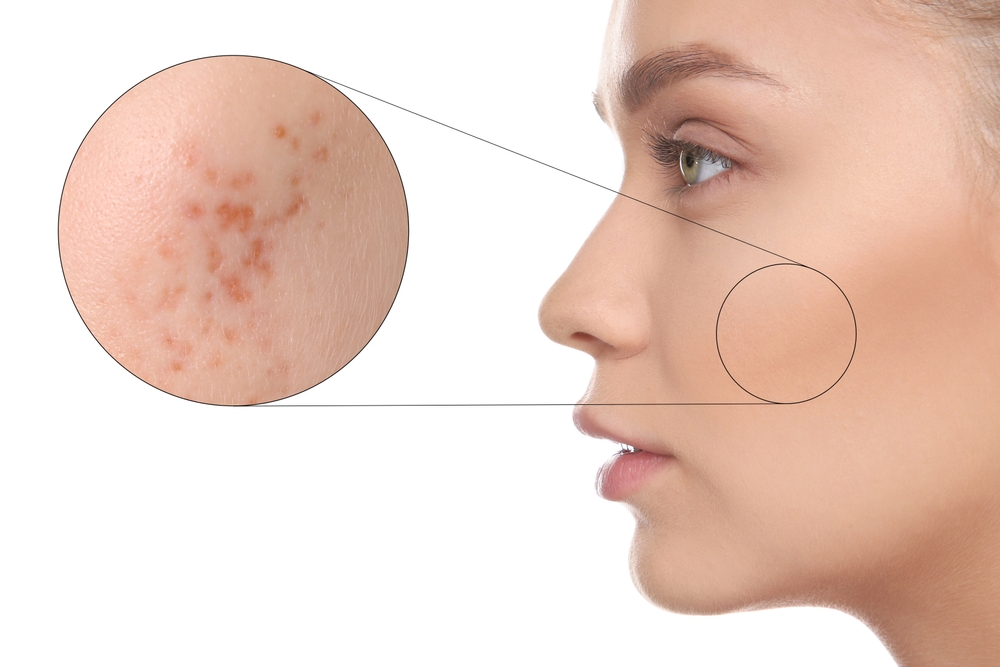
Acne usually occurs due to the overproduction of sebum by the oil glands and the clogging of pores by dead skin cells. This leads to bacterial growth and inflammation. The main causes of acne include hormonal changes, genetic factors, stress, improper skincare, and certain medications. Acne commonly appears on the face, back, chest, and shoulders, where sebum production is high.
Symptoms include whiteheads, blackheads, papules, pustules, and cysts. Whiteheads and blackheads are early stages of clogged pores. Papules and pustules are inflamed and red lesions. Cysts are deeper, painful lesions that can leave permanent scars. Acne also manifests as redness, swelling, and tenderness in the skin.
Active acne treatments work by reducing inflammation and drying out pimples. These treatments include topical treatments, oral medications, and professional skincare. Topical treatments contain ingredients that kill bacteria, remove dead cells, and unclog pores. Common topical treatments include:
Oral medications are used for more severe cases of acne. These medications include antibiotics, hormonal treatments, and isotretinoin. Antibiotics kill bacteria and reduce inflammation. Hormonal treatments address acne caused by hormonal imbalances. Isotretinoin reduces sebum production and speeds up skin cell renewal.
Enlarged pores result from increased oil production and clogged pores. Treatments for enlarged pores aim to clean and tighten them using various methods, including chemical peels, microdermabrasion, laser treatments, and topical retinoids.
Chemical peels remove dead skin cells from the surface, cleaning pores and improving skin texture. Microdermabrasion mechanically exfoliates the skin, helping to tighten pores. Laser treatments increase collagen production beneath the skin, tightening pores and improving skin texture. Topical retinoids speed up cell turnover and reduce sebum production, helping to tighten pores.
Post-acne treatment care and follow-up are crucial for enhancing the success of the treatment. Patients should clean and moisturize their skin regularly. Using sunscreen is essential to protect the skin from harmful sun effects. When choosing skincare products, opt for oil-free and non-comedogenic options.
Maintaining a healthy lifestyle and a balanced diet is also important during the treatment process. Reducing stress and getting adequate sleep positively impact skin health. Additionally, regular check-ups with a doctor or dermatologist are critical to assess the success of the treatment and identify any issues early. Acne treatment, when combined with proper care and follow-up, provides effective and lasting results. For detailed information on acne treatment, contact EMPCLINICS.
After acne treatment, it is important to keep your skin clean, avoid irritating products, and protect your skin from the sun. Additionally, follow your doctor's treatment plan and attend regular check-ups.
The duration of acne treatment varies from person to person. Generally, topical treatments begin to show effects within 6-8 weeks. More severe acne may require months of oral treatments or laser treatments.
Acne treatment methods include topical creams and gels, oral antibiotics, hormonal treatments, chemical peels, and laser treatments. The treatment method varies based on the severity and type of acne.